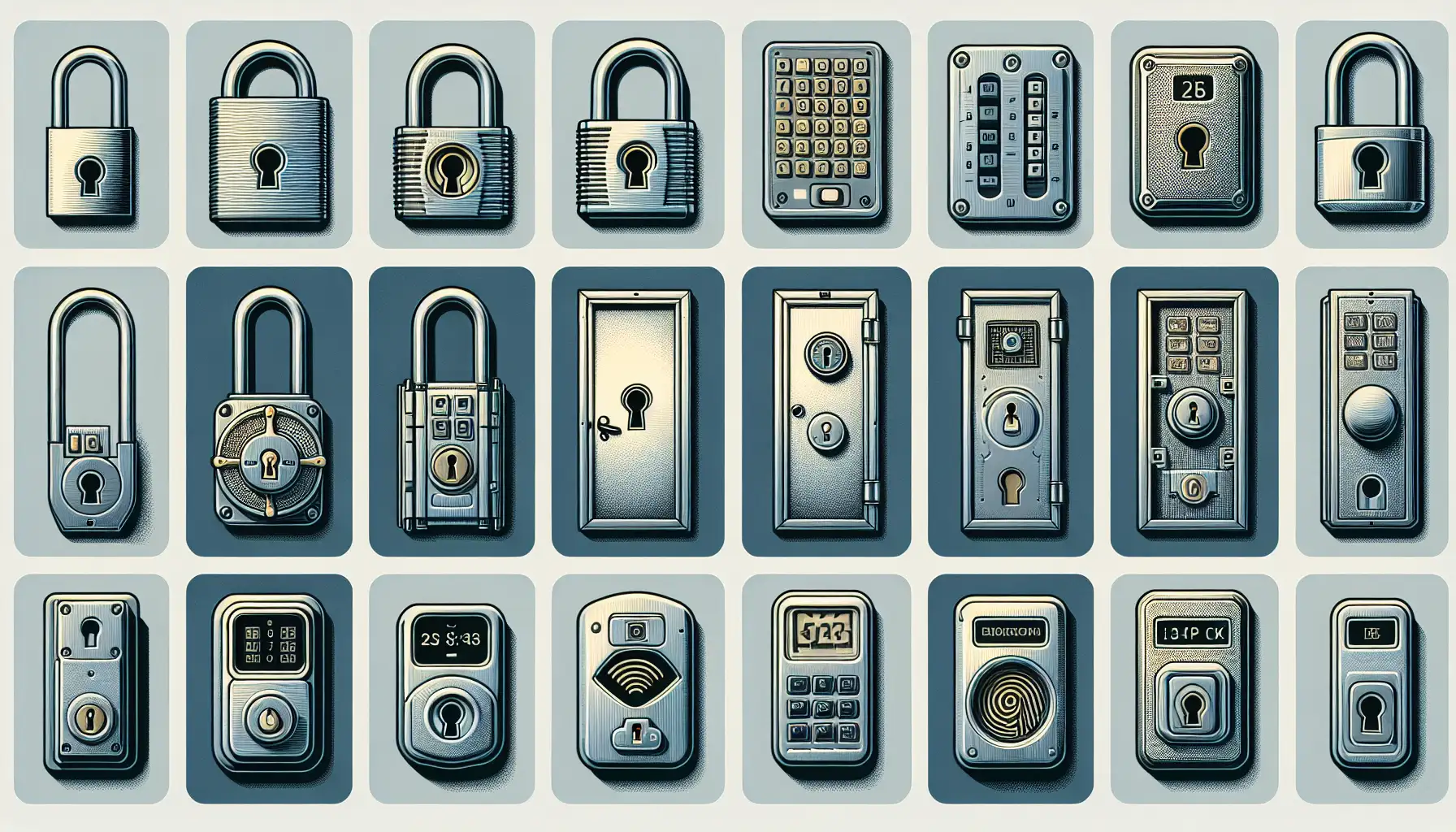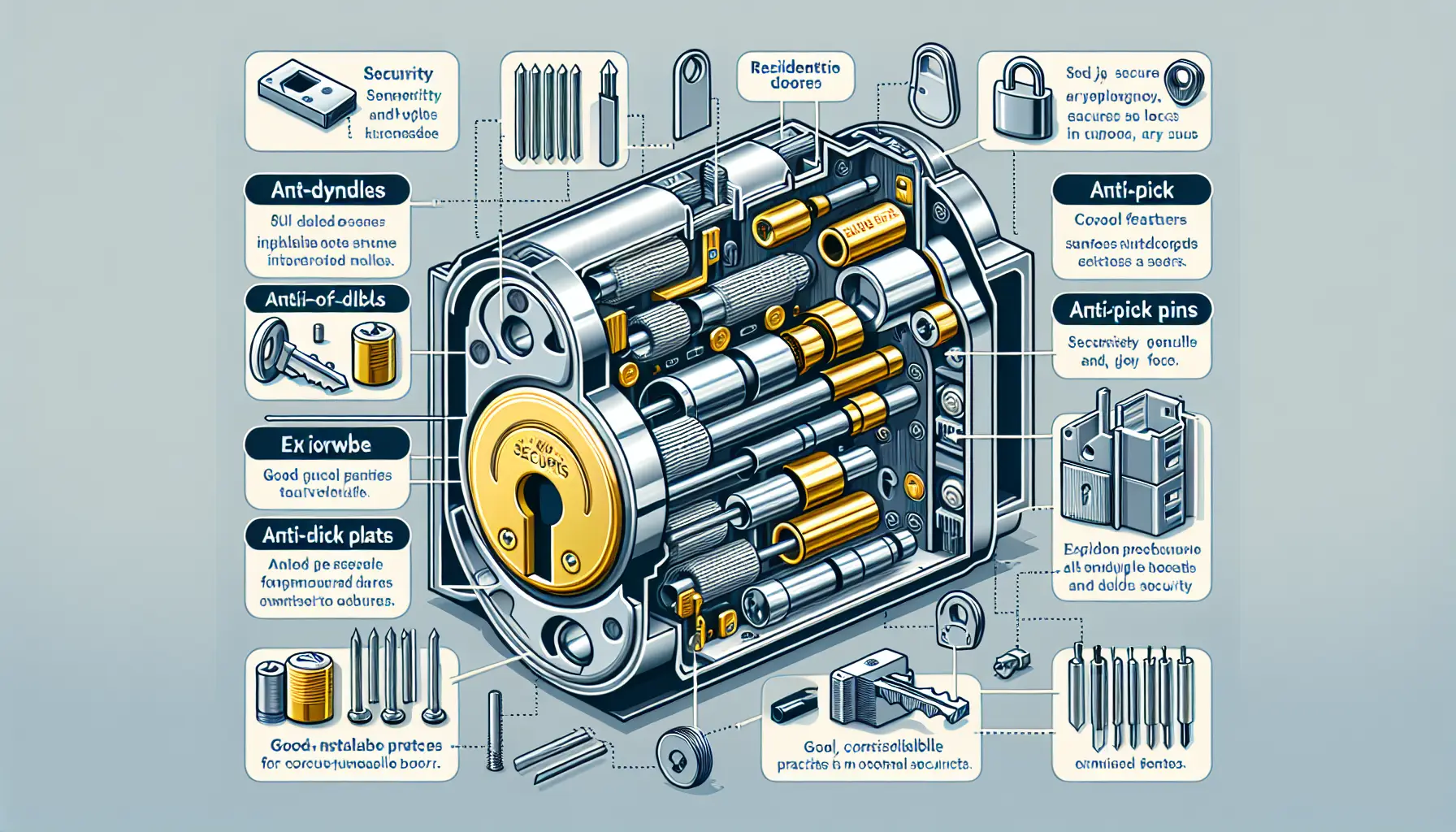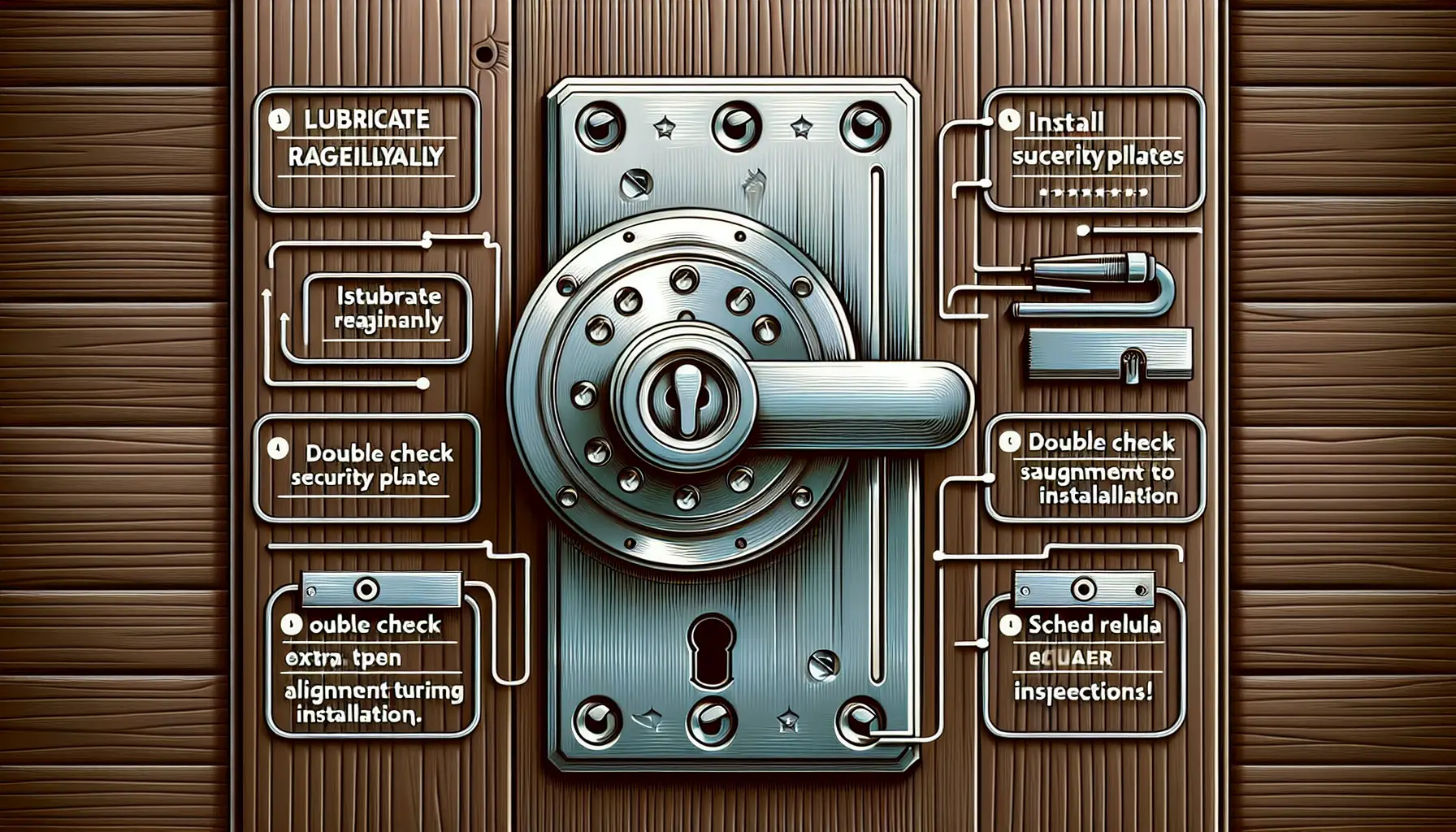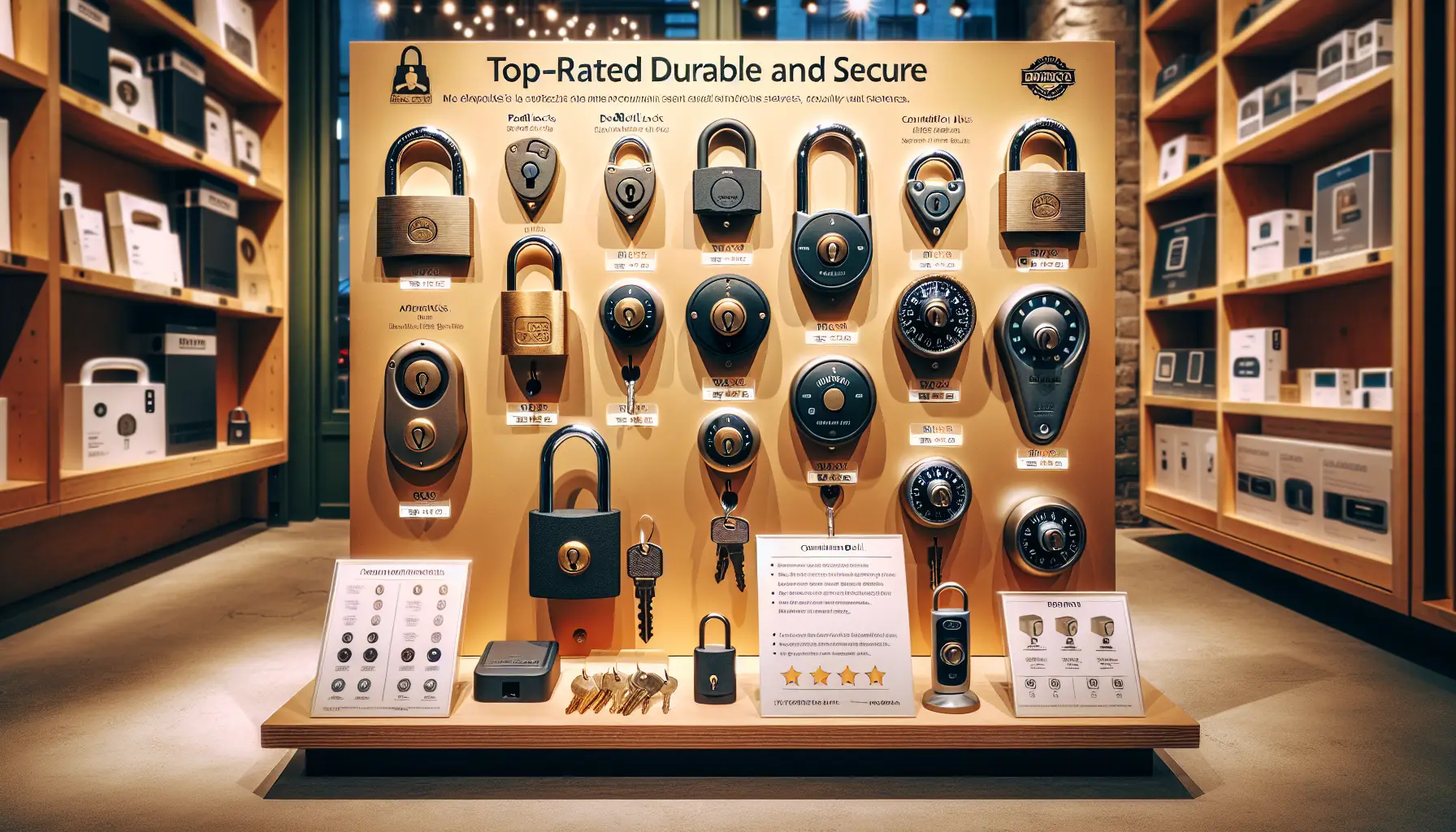Key Factors to Consider When Choosing a Lock for High-Traffic Areas
Durability That Stands the Test of Time
When it comes to high-traffic entry points, your lock isn’t just a security tool—it’s the silent workhorse that gets pushed, pulled, and tested hundreds, if not thousands, of times. Think about a bustling office building or a café with a steady stream of customers. Without a lock designed for endurance, you’re inviting wear and tear to become your daily headache.
Look for locks made from tough-as-nails materials like
hardened steel or
solid brass. These are the unsung heroes in the world of durability, standing firm against constant use and even the occasional attempt at forced entry.
If you're considering electronic options, pay close attention to the battery life and weather resistance. A sleek smart lock might seem tempting, but if it fizzles out during a rainstorm, it’s not doing you any favors. High-quality finishes like
nickel plating can also protect your lock from corrosion over time.
- Choose ANSI Grade 1 locks for ultimate strength.
- Look for tamper-resistant features like reinforced strike plates.
A durable lock isn’t just an investment; it’s peace of mind for every turn of the key—or tap of a code.
Types of Locks Suitable for High-Traffic Entry Points

Durable Locks That Can Handle the Hustle
When it comes to high-traffic entry points, think of your lock as a bouncer at a bustling nightclub. It needs to be tough, reliable, and ready to take on whatever the crowd throws its way. For these demanding situations, not all locks are created equal.
One standout option is the
keyless electronic lock. These locks are like the tech-savvy guardians of your door. They eliminate fumbling for keys during rush hours, making them perfect for office buildings or busy storefronts. Plus, with programmable codes, you can easily grant or revoke access faster than you can say "security upgrade."
Another powerhouse? The classic
mortise lock. This heavy-duty choice is built to withstand constant use without breaking a sweat. Its internal components are sturdier than your average lock, giving it that extra edge in durability.
- Panic bars: Ideal for emergency exits in crowded areas.
- Magnetic locks: Seamlessly secure doors while allowing swift, controlled access.
Choosing the right lock isn’t just about security; it’s about keeping up with the pace of life. After all, your door deserves a lock that works as hard as you do!
Security Features to Look for in Reliable Locks

Why Durability Matters More Than You Think
Picture this: a bustling café with dozens of customers streaming in and out, or a sleek corporate office where employees rush through the entrance every morning. These aren’t just doors—they’re gateways that endure relentless use. For such high-traffic entry points, you need a lock that can stand the test of time without flinching.
When choosing, look for locks made from robust materials like
hardened steel or
solid brass. These materials don’t just offer strength; they laugh in the face of wear and tear. But durability isn't just about the exterior. Check the internal mechanics too—smooth operation under pressure is key.
Here’s what to consider:
- Corrosion resistance: Perfect for outdoor locks exposed to the elements.
- Cycle testing: High-quality locks often boast tens of thousands of locking/unlocking cycles without failure.
- Impact resistance: Can it shrug off brute force attempts? That’s the gold standard.
The right lock doesn’t just open and close; it’s a silent sentinel, built to endure the chaos of daily life while keeping your space secure.
Installation and Maintenance Tips for High-Traffic Locks

Step-by-Step Tips for Smooth Lock Installation
Installing a lock for a high-traffic entry point is not just about screwing in a few bolts—it’s like choreographing a dance where precision and timing matter. Let’s break it down so you can master the steps with confidence.
First, always check the manufacturer's instructions. Yes, they might seem boring, but skipping them is like baking without a recipe—things can get messy fast.
Measure twice, drill once: ensure your door thickness matches the lock specs and mark drilling points carefully. A misplaced hole could throw everything off balance.
When drilling, use sharp tools for clean cuts. A dull drill bit can leave jagged edges, making installation feel like fitting a square peg into a round hole. If you're working with an electric strike or keypad lock, double-check wiring diagrams—it’s easy to mix up cables in the heat of the moment.
Finally, test the lock before calling it a day. Try turning the key or entering the code multiple times. Does it feel smooth? If not, adjust. After all, a lock that sticks is like a door that whispers, "I'm not quite ready to protect you yet."
Top Recommendations for Durable and Secure Locks

Locks That Can Handle the Hustle and Bustle
When it comes to high-traffic entry points, you need a lock that’s not just sturdy but also built to endure the daily grind—like the marathon runner of locks. Think about it: how many hands push, pull, twist, and tug on that door every single day? Your lock needs to be a warrior.
One standout option is the
Grade 1 Deadbolt. This lock doesn’t just meet security standards—it crushes them. It’s designed to handle the wear and tear of constant use without breaking a sweat. And for added flair, look for models with reinforced strike plates; they’re like armor for your doorframe.
If you’re juggling access for multiple people, a
smart lock with keypad might be your hero. No more fumbling with keys or worrying about copies floating around. Features to keep an eye out for:
- Durable touchpads resistant to smudging (because fingerprints can give away codes!).
- Automatic locking after a set time—perfect for forgetful moments.
Remember, the goal isn’t just to secure the door but to do it in style and with durability that laughs in the face of chaos.





